Pixel 6 Pro vs. iPhone 13 Pro: Which phone is best?
Pixel 6 Pro and iPhone 13 Pro are two of the best phones out there, and our guide will help you find the best for you!
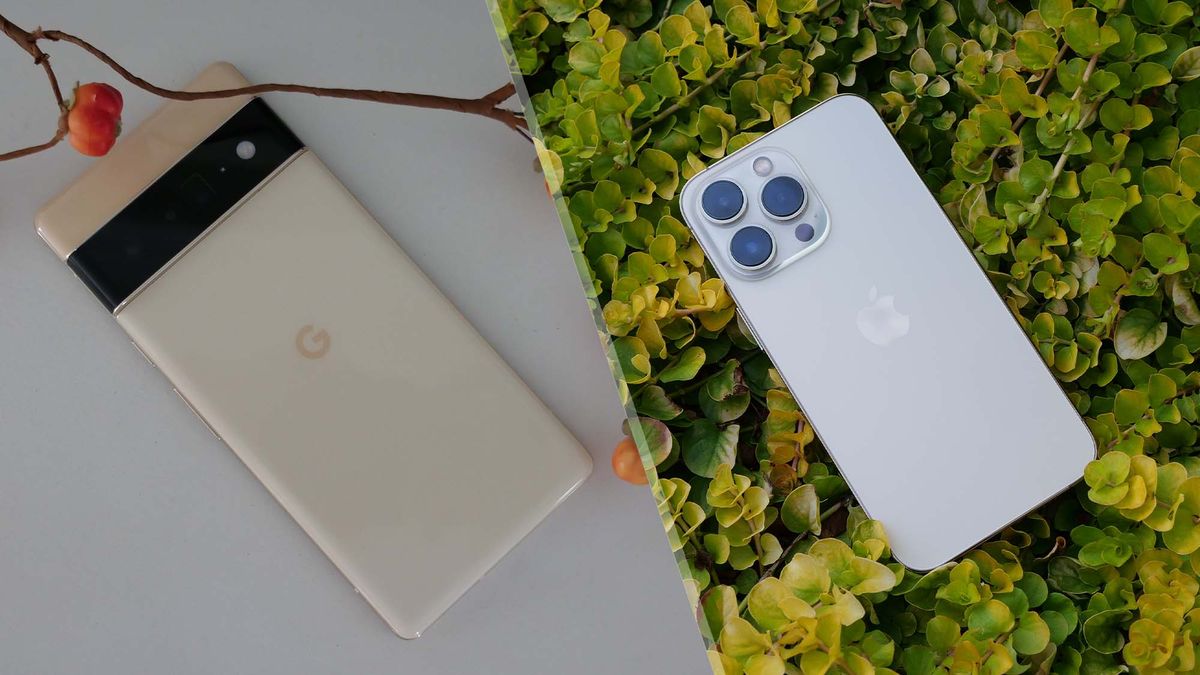
The Pixel 6 Pro is Google’s return to the flagship phone market, but does that mean it has what it takes to challenge the juggernaut that is the iPhone 13 Pro?
Google spent years on research and development to get to the release of the Pixel 6 Pro, and it shows; the hardware design, the Tensor chip, the new camera array and refined software all feel like a generational leap from Google’s previous Pixels. However, Apple hasn't been resting on its laurels with the iPhone, and though the iPhone 13 Pro looks virtually identical to last year’s model, the updates to the display and cameras, in particular, are considerable.
Pixel vs. iPhone has traditionally been a question of Google’s software trying to outperform Apple’s hardware, and while there’s still some truth to that, Google’s hardware has taken enough of a leap that it is a much more balanced face-off this year.
- Best smartphones in 2021
- Best budget phones in 2021
- Best mobile phone deals in November 2021
Best Black Friday 2021 deals
Black Friday 2021 falls on November 26 and we expect to see tons of excellent deals on today’s most coveted tech. Be sure to bookmark our Black Friday 2021 deals hub for the best holiday discounts.
Pixel 6 Pro vs. iPhone 13 Pro: price and value
The iPhone 13 Pro starts at $999 for a 128GB model with 6GB of RAM. You can upgrade to 256GB, 512GB, or a new 1TB option. It’s an extra $100 for the 256GB model, which is necessary for the new ProRes video feature on iPhone 13 Pro. Add another $200 for the 512GB and 1TB options, which max the phone out at $1,499.
The Pixel 6 Pro starts at $899 for the 128GB model with 12GB of RAM. For $999, you can bump up to 256GB, and the top-end 512GB model is $1,099.
Neither is a budget option, but the $100 price advantage for the Pixel 6 Pro isn’t insignificant, either. For both phones, I would recommend upgrading to at least the 256GB version if you regularly take photos or videos as the 128GB will fill up quickly. For particularly prolific mobile photographers and videographers, the Pixel 6 Pro gains a more significant advantage as it’s $1,099 for the 512GB model, while the comparable iPhone 13 Pro is $1,299.
Stay in the know with Laptop Mag
Get our in-depth reviews, helpful tips, great deals, and the biggest news stories delivered to your inbox.
The iPhone 13 Pro still retains a slight edge in longevity with roughly six years of software support compared to five years of security updates for the Pixel 6 Pro. Still, with a 10% to 18% price advantage, the Pixel 6 Pro is a better overall value this year.
Winner: Pixel 6 Pro

Pixel 6 Pro vs. iPhone 13 Pro: design
The iPhone 13 Pro Max follows the squared-off aesthetic Apple brought back with the iPhone 12, which makes the iPhone instantly recognizable at a glance. The Pixel 6 Pro has done the same this year; the visor bar camera array on the back of the Pixel combined with the two-tone finish make it unmistakable.
While I both appreciate the originality and legitimately like the style of both phones, opinions on the style will vary. From a more practical standpoint, they both have some hits and misses. I love the size of the iPhone 13 Pro; it fits great both in my hand and in a pocket.
On the other side, the full-width camera array on the Pixel 6 Pro makes it one of the first phones in years that will sit nicely face up or down on my desk. However, the Pixel 6 Pro is slippery without a case and that is a concern given its considerable size. The iPhone 13 Pro will similarly drive you to a case to eliminate its massive rectangular camera array, and that notch is still irritating. Yes, you learn to ignore it, and it’s 20% smaller this year, but here’s hoping iPhone 14 brings on the hole-punch camera.

Each phone is on equal footing with IP68 water and dust resistance and comparable screen protection when it comes to durability. While Apple has its proprietary Ceramic Shield, the consensus is that it is ultimately similar to the Gorilla Glass Victus that you find on the Pixel 6 Pro. Neither will survive a high fall on concrete, but both should deal with more normal bumps and scrapes just fine.
Looking at the phones by the numbers, the Pixel 6 Pro is considerably larger at 6.5 x 3.0 x .035 inches compared to 5.8 x 2.8 x 0.3 inches for the iPhone 13 Pro. However, despite the size disparity, the Pixel 6 Pro weighs just 0.2 ounces more than the 7.2-ounce iPhone 13 Pro. The weight is a bit surprising, but the size difference is expected with the Pixel 6 Pro sporting a 6.7-inch display versus the 6.1-inch display on the iPhone 13 Pro.
Any winner here would be a purely subjective ruling as there is no clear edge for durability, ergonomics, or materials. I’m a fan of both designs, as it’s impressive to have found a unique design language in the crowded phone landscape.
Winner: Draw

Pixel 6 Pro vs. iPhone 13 Pro: display
The Pixel 6 Pro features a 6.7-inch, QHD+ (3120x1440 pixel) LTPO OLED display with Google’s Smooth Display delivering an adaptive 120Hz refresh rate. The iPhone 13 Pro has a much smaller 6.1-inch Super Retina XDR (2532x1170 pixel) display with ProMotion, which also delivers an adaptive 120Hz refresh rate.
Even factoring in the size disparity, the Pixel 6 Pro is the sharper of the two displays with 512 pixels per inch (PPI) compared to 460 PPI for the iPhone 13 Pro. With that said, unless you are very close to the phones, it isn’t a meaningful difference; both look crisp and clear when displaying video, images, or text.
If display size is the deciding factor for you, the Pixel 6 Pro is the winner here. Then again, you should probably be looking at the comparably sized (but $200-$300 more expensive) iPhone 13 Pro Max. So leaving size out of it, let’s see how the two screens compare.
As I mentioned, both phones offer adaptive 120Hz refresh rates courtesy of LTPO OLED displays. The ProMotion and Smooth Display names aside, they are virtually identical with the ability to scale up to 120Hz and down to 10Hz depending on the content on your screen. Android is enjoying a brief advantage here as iOS developers adopt the 120Hz, which was previously exclusive to iPadOS, but this will likely tip in Apple’s favor soon.

I turned to one of my favorite HDR titles -- Life in Color with David Attenborough -- for my eyes-on judgment of which display looks better. Both produce a beautiful image with every minute detail visible down to the tiny spines on a yellow spider’s legs; however, I did notice one distinct difference side-by-side: the iPhone 13 Pro has a slightly warm yellow cast to the entire display; it’s apparent looking at the white petals of the flower that the spider is emerging from, which are a crisp pure white on the Pixel 6 Pro and a slightly off-white on the iPhone 13 Pro. It’s something I don’t think I ever would have noticed without looking at the two side-by-side, so it’s not a dealbreaker for the iPhone 13 Pro by any means, but it’s unmistakable with the Pixel 6 Pro next to it.
Letting our lab tests weigh in on the matter, in our colorimeter results, the Pixel 6 Pro covers 74% of the DCI-P3 color gamut in its Natural color setting. The iPhone 13 Pro comes out ahead at 82.5%. While that tips in favor of the iPhone, if you like a more colorful look, the Pixel 6 Pro can turn things up with its Boosted color setting that likely pushes it to roughly double the Natural setting.
Brightness is less contentious; the iPhone 13 Pro delivered 1,024 nits of brightness, making it the brightest mobile display that we’ve ever tested. The Pixel 6 Pro hits an impressive 842 nits, but it’s not enough to keep up with the iPhone 13 Pro. Both will be perfectly visible in even bright sunlight, but Apple wins.
Overall this category goes to the Pixel 6 Pro. The 120Hz refresh rate is a wash and the brightness goes to the iPhone 13 Pro, but the Pixel takes it with a wider color gamut, higher resolution, and superior color accuracy.
Winner: Pixel 6 Pro
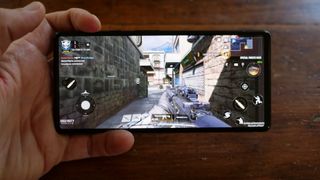
Pixel 6 Pro vs. iPhone 13 Pro: performance
Google is finally facing off against Apple with its own custom Tensor chip, and while there are some clear advantages over the Qualcomm chips used in the past, it’s no surprise that the iPhone 13 Pro’s A15 Bionic remains the clear champion for raw power.
In real-world usage, both phones are excellent. We loaded up dozens of Google Chrome tabs, apps, picture-in-picture videos, and games in our review of each phone, and neither skipped a frame. Unlike last year’s Pixel lineup, I could fire up games like Call of Duty Mobile and play through them even at its highest settings without issue. However, when you look at the benchmarks, you’ll see the iPhone’s edge much more clearly.
On the Geekbench 5 overall performance test, the iPhone 13 Pro holds the new mobile record at 4,718. The Pixel 6 Pro comes up nearly 2,000 points short of that mark at 2,760. This is a lesson in how overpowered our phones are at the moment given how solid the Pixel 6 Pro handles everything I threw at it, but for longevity, the iPhone 13 Pro should still be fast enough in 3 to 4 years, when the Pixel 6 Pro will be showing its age.

Our graphics-focused testing was a bit closer with the Pixel 6 Pro delivering 40 frames per second, which is still a far cry from the iPhone 13 Pro’s 70 fps, but beyond what we’ve seen from pricier Snapdragon 888 flagships like the Galaxy S21 Ultra (34 fps).
The Adobe Premiere Rush video editing test is a real-world example of Apple’s performance advantage; the iPhone 13 Pro finished rendering and exporting a 4K video to 1080p in just 26 seconds. The same task took the Pixel 6 Pro 48 seconds. It is another easy win for Apple, but again, the Pixel’s Tensor chip is ahead of its Snapdragon-powered Android competition.
Both phones will deliver solid day-to-day performance for typical smartphone tasks, but this round isn’t close: the iPhone 13 Pro is the undisputed champ.
Winner: iPhone 13 Pro

Pixel 6 Pro vs. iPhone 13 Pro: battery life and charging
From a strict hardware perspective, the Pixel 6 Pro should be the winner here as its 4,614mAh battery dwarfs the 3,095 mAh battery found in the iPhone 13 Pro. However, ignoring last year, Apple has had some secret sauce when it came to extracting the best battery life out of its phones, and that is once again the case.
While my experience with the Pixel 6 Pro battery life has been very positive, Pixel 6 Pro battery life reports have ranged considerably. Some find them to be well short of the competition. As you’ll see if you take a look at our report above, most people rate the Pixel 6 and Pixel 6 Pro's battery life as either all-day or all-day and beyond.
With that said, the iPhone 13 Pro has the edge here, putting up 12 hours flat in our Laptop Mag battery test, eclipsing any previous iPhone, and coming in only 16 minutes behind the iPhone 13 Pro Max. I never managed to kill either phone during my time with them, but the iPhone 13 Pro never dropped below 30% battery life, whereas I saw the Pixel 6 Pro get to 15% with roughly identical workloads.

I wouldn’t anticipate battery life being a problem for users of either phone, but if you are someone who pushes your phone’s battery to its limits then the iPhone 13 Pro is likely the better choice.
Despite Google’s adoption of 30W fast charging, the charging speeds between the two phones remain virtually identical due to the smaller iPhone 13 Pro battery size. Apple’s 20W charging gets the iPhone 13 Pro to 25% in 15 minutes and 53% in 30 minutes. The Pixel 6 Pro mirrors this almost identically, ending at 51% in 30 minutes. Both require a separate purchase of a 20W or 30W charger as Apple and Google only include a USB-C-to-Lighting and USB-C-to-USB-C cable in the box, respectively.
Both phones also support wireless charging with Qi compatibility and the iPhone 13 Pro offers Apple’s proprietary MagSafe charging. Google boosted its wireless charging support to 23W this time around, but again, it doesn’t lead to a charging speed edge due to the battery sizes.
While I don’t think it’s the decisive win that some might consider it to be, this is another victory for the iPhone 13 Pro.
Winner: iPhone 13 Pro
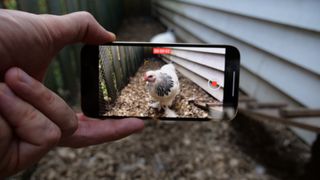
Pixel 6 Pro vs. iPhone 13 Pro: cameras
With the Pixel 6 Pro, Google is back in the discussion for the best camera on a smartphone and that’s a good thing for this face-off as the iPhone 13 Pro is unquestionably the current reigning champ.
In past years, there was no question the iPhone camera hardware was better. What made the Pixel a contender was computational photography. This year, things are different. The Pixel 6 Pro introduces a wide-angle primary 50MP Octa PD Quad Bayer with an f/1.85 aperture and a 1.2µm pixel width. The new sensor is 1/1.31”, making it one of the largest in any smartphone on the market. The 12MP ultra-wide is a more incremental upgrade, but the larger 1.25µm pixel width, f/2.2 aperture, and wider 114-degree field of view still yield better results than its predecessor. Finally, the new telephoto features a 48MP resolution with a 4x optical zoom that can deliver usable results even at its full 20x digital zoom.

iPhone 13 Pro camera samples

iPhone 13 Pro camera samples

iPhone 13 Pro camera samples

iPhone 13 Pro camera samples

iPhone 13 Pro camera samples

iPhone 13 Pro camera samples

iPhone 13 Pro camera samples

iPhone 13 Pro camera samples
While the iPhone still uses a low megapixel count for its camera sensors, those sensors are unmatched in many regards and, combined with the LiDAR scanner and TrueDepth sensor for enhanced depth sensing and AR features, the iPhone 13 Pro camera array is a feature-packed powerhouse. The trio of 12MP rear sensors on the iPhone 13 Pro includes a wide-angle that is one of the fastest we’ve seen at f/1.5, and the ultra-wide got a massive upgrade this year to f/1.8, rivaling the primary of many flagships. The telephoto jumps to 3x optical, up from 2.5x, but falls to f/2.8 aperture from f/2.0. The front-facing camera holds steady at f/2.2. Sensor-shift optical image stabilization returns to enhance the low-light performance of the iPhone 13 Pro Max.

Pixel 6 Pro camera samples

Pixel 6 Pro camera samples

Pixel 6 Pro camera samples

Pixel 6 Pro camera samples

Pixel 6 Pro camera samples

Pixel 6 Pro camera samples

Pixel 6 Pro camera samples

Pixel 6 Pro camera samples

Pixel 6 Pro camera samples

Pixel 6 Pro camera samples

Pixel 6 Pro camera samples
The wide-angle lenses on both phones are simply astounding even when switching over to night shots. The fountain near my home always makes for an interesting subject and you get excellent detail even with Night Sight and night mode turned off. When relying on those modes , I still prefer the results from the Pixel 6 Pro for its more natural look.

Pixel 6 Pro wide-angle night mode

iPhone 13 Pro wide-angle night mode
Speaking of night photography, while it may be a niche area, if you like taking pictures of the night sky, the Pixel 6 Pro wins by an astronomical unit. This is absolutely because of software and not hardware, but Apple simply hasn’t cracked this one yet. Apple just cranks up the brightness on the entire image and only allows for a 30-second exposure. Google lets you capture for a full four minutes and is much defter with its handling of the exposure, really bringing out the stars against the dark sky.


Turning to Apple’s advantages, the f/1.8 ultra-wide gives it an enormous edge in challenging lighting. If you take a lot of group photos indoors, then the iPhone 13 Pro will be the choice for you as it’s easily the best ultra-wide we’ve seen on a phone. A standard shot of that fountain from the Pixel 6 Pro ultra-wide at night is almost unusable, whereas the iPhone 13 can pull in enough light to show off all the detail in the lion sculpture. Sure, you can turn on night mode on the Pixel, but if you are taking photos of people rather than a fountain their movement may cause it to be a bit blurry.

Pixel 6 Pro ultra-wide night mode

iPhone 13 Pro ultra-wide night mode
Whether it’s selfies or portraits from the rear-facing cameras, the iPhone remains the champion in that regard. This is likely a result of the true-depth and LiDAR sensors, giving it better depth data than the Pixel. Regardless of the reason, the portraits from the iPhone 13 Pro are more crisp and clear with accurately applied bokeh.

iPhone 13 Pro front-facing portrait mode

Pixel 6 Pro front-facing portrait mode
I do need to mention one feature for the Pixel 6 Pro that continues to blow me away: Magic Eraser is a Pixel-exclusive feature that allows you to remove objects or people from a photo by simply tapping on them. While there are limits to what it can do, the results in the right photos are amazing and could potentially save photos where someone or something in the background is spoiling your shot.

Apple still holds the title as the undisputed ruler of mobile video and while I’m not personally that sold on Cinematic Video, the portrait mode for video feature makes for a cool demo. The sensor-shift image stabilization that is now available on the iPhone 13 Pro pushes this further as the video looks like it was captured on a gimbal. By comparison, the Pixel 6 Pro video component is 4K and 1080p, but apart from astrophotography timelapse, there’s nothing exceptional there.
Both phones have their strengths, but ultimately, this is a stalemate. If your style of mobile photography leans heavily toward one of the specific advantages for either phone, that should sway you, but neither phone clearly outperforms the other.
Winner: Draw
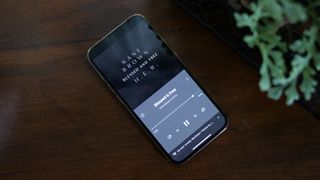
Pixel 6 Pro vs. iPhone 13 Pro: software
I’m not looking at iOS versus Android here; both have their advantages and disadvantages, but each one is a mature operating system that anyone could easily adapt to within a couple of weeks.
iOS 15 introduced some interesting new features to the iPhone, including the ability to finally use FaceTime with Windows or Android users, an abundance of new granular notification controls, enhancements to Apple Maps, and a more robust Photos app to compete with Google Photos. Probably the strongest arguments in favor of iOS are the ecosystem as a whole. If you also own an iPad, a MacBook or particularly an Apple Watch then iPhone is the way to go.
If you read our review of Android 12 then you’ll know that the operating system just got a dramatic visual refresh, including the new notification panel, privacy updates and some other handy additions like universal search. As per usual, the Pixel gets some unique extras like Hold for Me which will tell you when a real person comes back on an automated call and dramatically improved dictation that is assisted by the new Tensor chip. While I already addressed it in the camera section, Magic Eraser is worth a second nod as it’s incredible even if you won’t use it daily.

Software support is typically the big differentiator for Apple with the company offering roughly five to six years of support for its flagship phones. This year, Google has shifted to a commitment of 5 years of security updates for the Pixel 6 and Pixel 6 Pro, with three years of major OS updates.
While a lot of people are jumping on that last point to say that isn’t close to what Apple offers, it’s important to note that an enormous number of Android features are tied to Google apps and not the core OS, meaning three years is hardly the end of feature updates for the Pixel 6 Pro, but rather, only the end of the line for new Android versions. It’s also worth noting that not all iOS features make it to every supported phone, so despite the different ways of going about it, the result is roughly the same.
If you are someone who hangs on to your phone for 6 or more years, there’s still an advantage in going with an iPhone, but otherwise there isn’t a meaningful difference between the two.
Winner: Draw
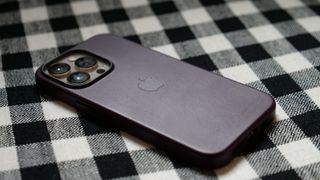
Overall winner: iPhone 13 Pro
While a pure look at the wins by category will show this to be a tie with two wins each and four draws, the overall win goes to the iPhone 13 Pro. Hear me out on my reasoning as it may impact whether this “win” makes it the right choice for you.
The two wins for the iPhone 13 Pro come in categories that directly impact the overall longevity of the phone. If you are someone who hangs on to their phone for at least 4-5 years, the iPhone 13 Pro will be the better device compared to the Pixel 6. The performance of the A15 Bionic is so far beyond what is needed for this phone that it will still be more than capable in 4-5 years, whereas Google’s Tensor will be feeling its age in the next two years. And while battery life is less decisively a win, there’s still no question that the iPhone 13 Pro outlasts the Pixel 6 Pro. Also, getting a replacement battery for the iPhone is a far easier process than with the Pixel.

The Pixel’s biggest advantage is its affordable price point and superior display. These are both compelling points and the former certainly may sway buyers who want a large display without spending over $1,000 on a phone. And if you only hang on to a phone for 2-3 years, the Pixel 6 Pro is absolutely the equal of the iPhone 13 Pro so you wouldn’t be making a mistake choosing it.
These phones reflect Google and Apple at the top of their games at the moment with camera performance that is unmatched by anyone else in the industry, beautiful 120Hz displays, and excellent software support. If you are into videography, the iPhone has a clear edge, and if you like to use dictation or digital assistant features then the Pixel is miles ahead. Consider what you use your phone for and how long you want to keep it and know that regardless of which you choose, you are ending up with one of the best phones available today.
Sean Riley has been covering tech professionally for over a decade now. Most of that time was as a freelancer covering varied topics including phones, wearables, tablets, smart home devices, laptops, AR, VR, mobile payments, fintech, and more. Sean is the resident mobile expert at Laptop Mag, specializing in phones and wearables, you'll find plenty of news, reviews, how-to, and opinion pieces on these subjects from him here. But Laptop Mag has also proven a perfect fit for that broad range of interests with reviews and news on the latest laptops, VR games, and computer accessories along with coverage on everything from NFTs to cybersecurity and more.